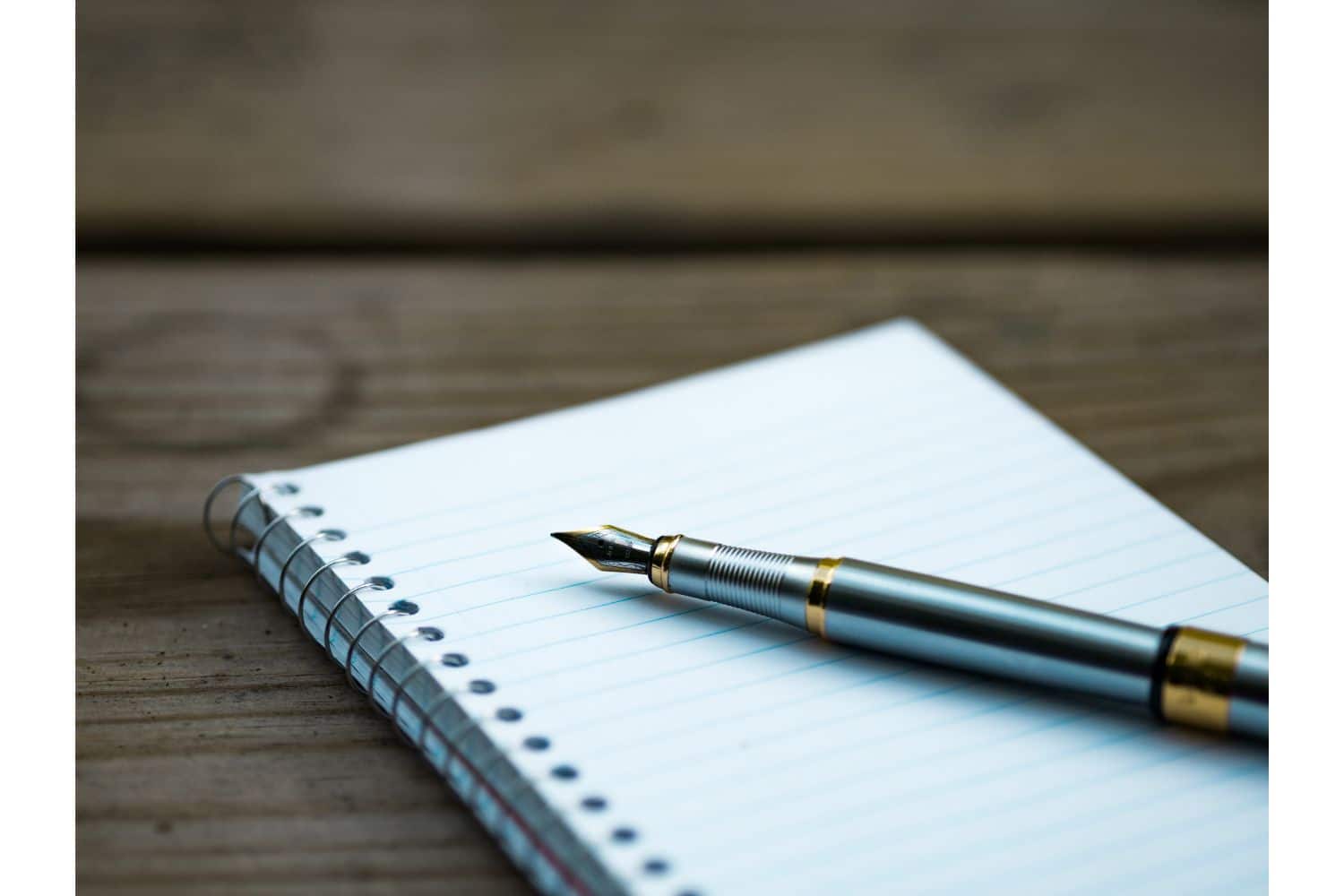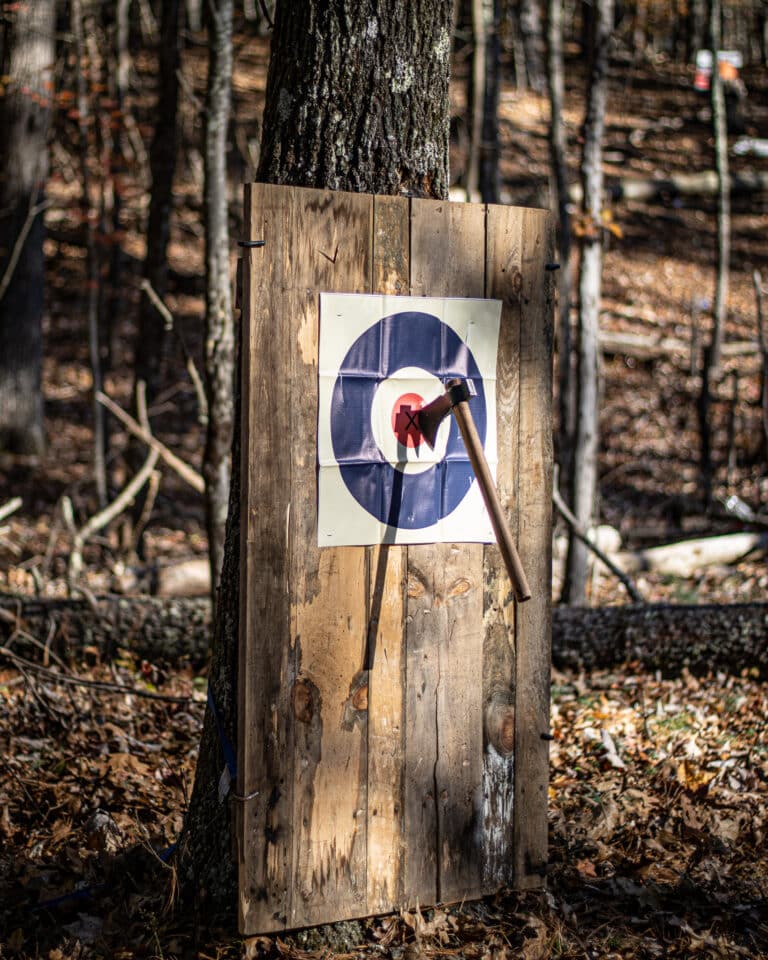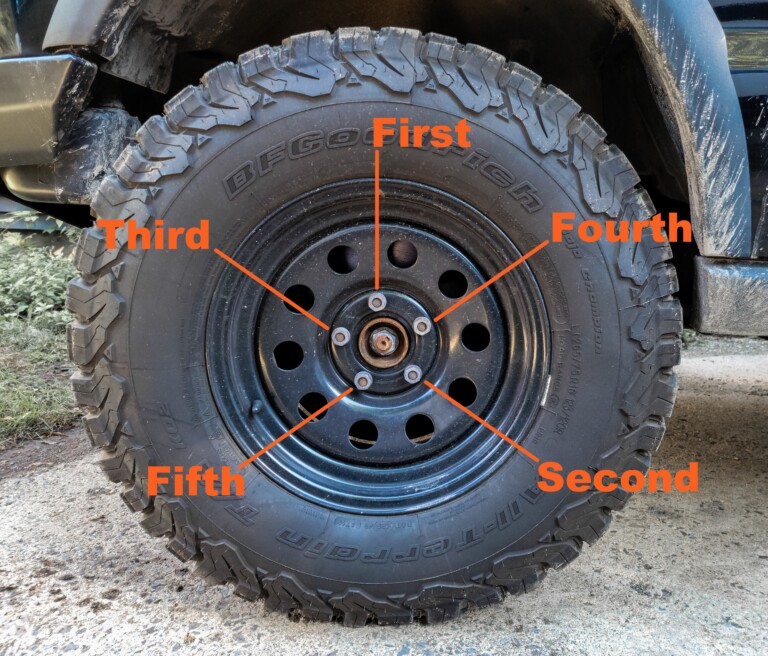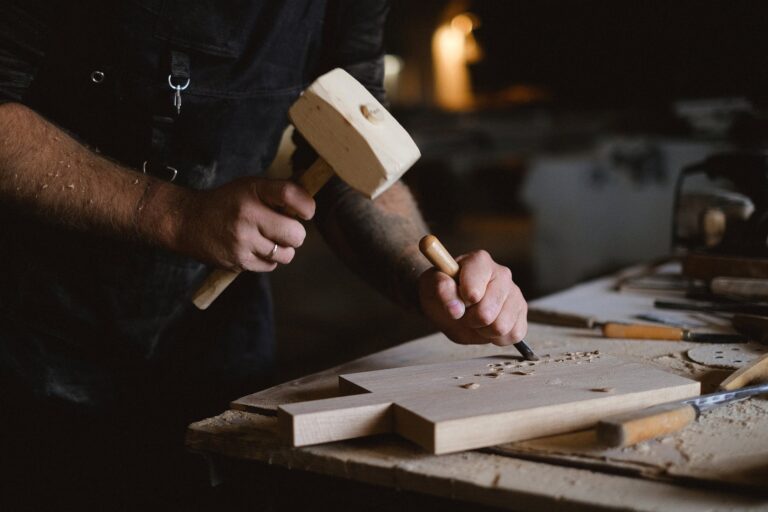How To Write With a Fountain Pen: A Lost Art Men Can Master
The first time I wrote with a fountain pen, I felt like an idiot. The ink wouldn’t flow and the tip felt like it was just scratching away at the paper. But, once I learned how to use a fountain pen, I fell in love with it. I started buying them and giving them away as gifts, introducing friends and family members to art. And, as it turns out, some of my friends were big fountain pen folks as well!
I can’t speak for you, but I can say that writing with a fountain pen is somewhat of a zen experience. Watching the ink flow onto the paper, with the thick, rich contrast on the writing surface, and the fact that every stroke requires deliberate thought.. It’s just something you can’t replicate with a ballpoint pen, and it takes time to learn as all badass skills do. And this guide will explain a bit about fountain pens as well as how to write with a fountain pen, so keep reading to learn more.
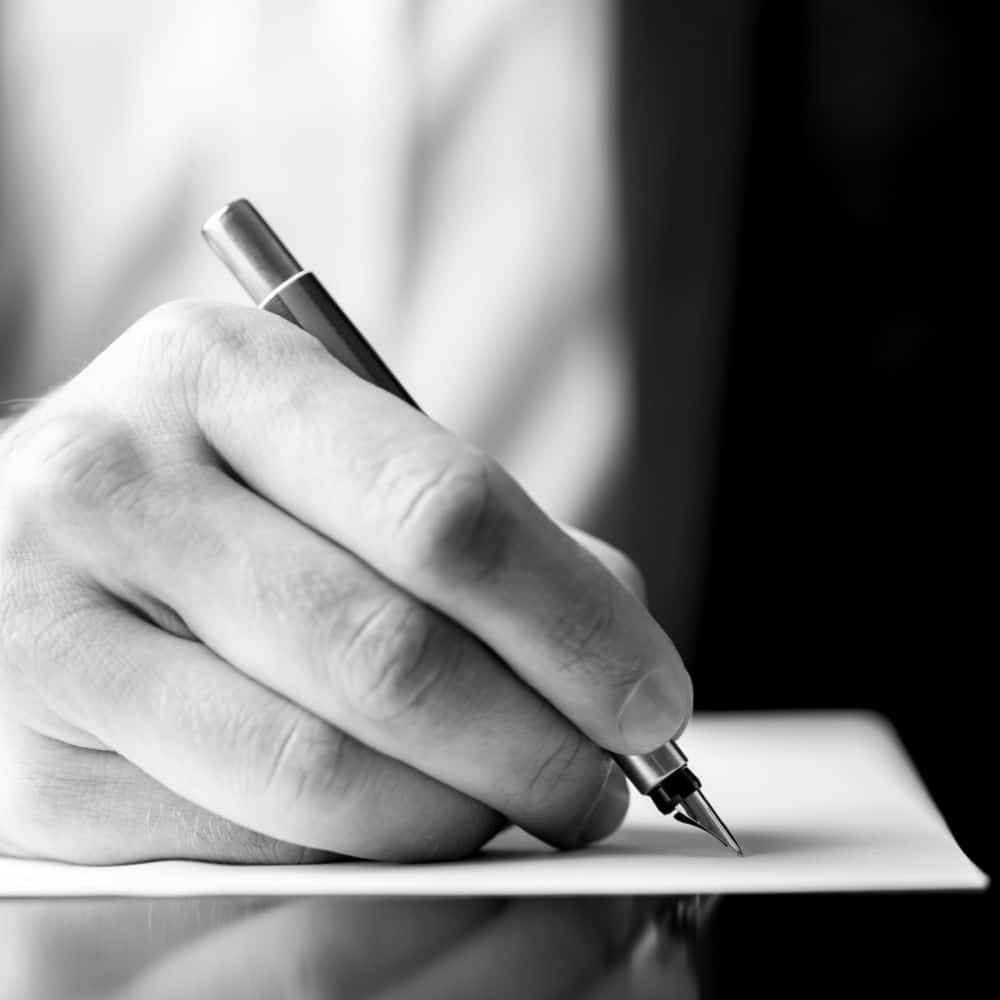
The History of Fountain Pens
Before we go too far, it’s worth tipping our hat to the history of the fountain pen. This tool revolutionized writing for a time, and we owe it to the past.
The truth is that the idea of developing a pen with a constant flow of ink has been around for centuries. Rather than dipping a quill (think feather-type pens) into an ink reservoir or well, innovators tried to create a pen that would hold the ink inside itself, flowing onto the writing surface when the two touch. But try as they may, inventors couldn’t figure out a reliable writing tool.
Until 1827, that is.
At this time, a Romanian inventor named Petrache Poenaru was able to create such a pen. He created a pen with a barrel that contained the ink and combined it with a quill-type nib. The nib would allow the ink to flow down from the barrel to the tip of the pen, leaving behind a smooth flow of ink with each writing movement. And while this pen was revolutionary, it was only the start of something, as this design didn’t exactly take off.
The 19th century was a wild time for those crazy fountain pen inventors! Several designs came along, each with its own filling systems and nib materials, and challenges that fountain pen manufacturers had to overcome. American inventor Lewis Waterman was one such innovator, as he developed a pen that utilized capillary action to facilitate the ink flowing properly onto the paper.
And it was just the innovation the world was looking for at the time.
Waterman’s design became extremely popular very quickly. Folks could now write neatly and quickly without messes or spills. Learning how to write with a fountain pen was a true skill. Handwritten letters and signatures on contracts were soon the perfect opportunity to break out fancy fountain pens from the likes of Montblanc, Parker, and Sheaffer.
But, sadly, the heyday of the fountain pen didn’t last long. By the 20th century, ballpoint pens started to push fountain pens out of the way. Being easier to use, even less messy, and more affordable, the ballpoint’s convenience was hard to ignore, and these are reasons why so few people know how to write a letter with a fountain pen today.
But, recently, there has been a new interest in fountain pens. Collectors and calligraphers still admire and appreciate them, and the rare handwritten letter is more cherished today than ever, and it’s not hard to see why.
Parts of a Fountain Pen
A fountain pen comprises various parts, each playing a crucial role in its functionality and aesthetics. Here are the key components of a typical fountain pen:
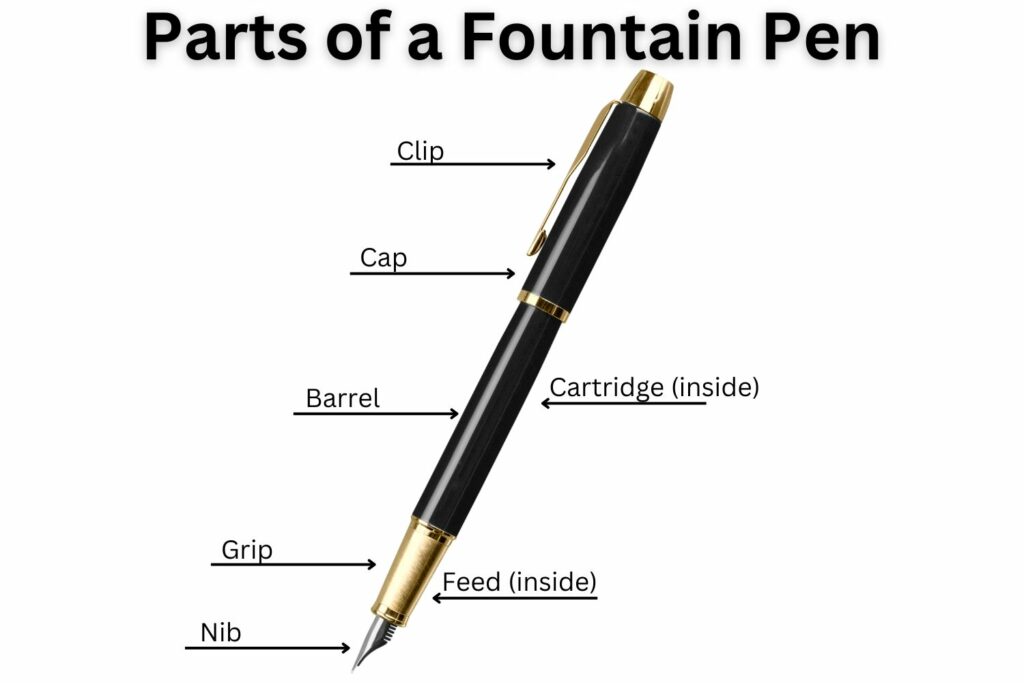
- Nib: The nib is the part of the pen that comes in contact with the paper. It is a small, pointed metal piece, and its job is to transfer a flow of ink to the writing surface. Nibs come in different sizes (extra-fine nib, fine nib, medium nib, and broad nib are common). There are also several nib material types, including stainless steel nibs and gold alloys—each offering a unique writing experience.
- Feed: The feed is connected to the back of the nib. It’s a small, ribbed plastic or ebonite piece that controls the flow of ink from the ink cartridge or reservoir to the nib. It maintains a consistent flow of ink for smooth results.
- Barrel: The barrel is the main body of the fountain pen, and it houses the ink cartridge. Barrels come in many designs, materials, and sizes, and can make pens highly collectible.
- Ink Reservoir: Also known as the ink cartridge or converter, the reservoir holds the ink supply for the fountain pen. Ink cartridges are generally disposable and come prefilled with ink, while converters are refillable using bottled ink and the converter’s filling system.
- Cap: Similar to any standard ballpoint pen, a fountain pen’s cap fits over the nib to protect it when the pen it’s not in use. Caps can be extremely important for fountain pens as they keep messes to a minimum and also prevent the ink from drying and the nib from collecting lint.
- Grip Section: The grip section is the part of the pen that the user holds while writing. It is typically made of a comfortable material or contoured for an ergonomic fit.
- Clip: Located at the top of the cap, the clip allows users to attach the pen to a pocket or notebook, providing portability and easy access.

Enjoying learning about badass skills? What about reviews on products men actually use? Or just generally learning how to be a more useful man? THEN JOIN THE TGA MAILING LIST! Weekly content sent directly to your email address so you don’t miss any of the fresh content and useful advice we’re producing. Sign up below!
Choosing the Right Fountain Pen
It’s my opinion that every guy should own at least one fountain pen. When it comes to high-end writing instruments, there are lots of options, and shopping is half the fun. But choosing the best fountain pen does require some consideration. Here are some important aspects of fountain pens to keep in mind during the process of shopping for a modern fountain pen:
Nib Size and Material
As I mentioned above, fountain pen nibs come in various sizes and materials. They range from extra-fine to broad in size, determining the width of the writing line. Thicker lines may look smooth, but they take longer to dry and use a lot of ink. Thinner lines may be harder to see and less smooth, but they use less ink and dry quickly.
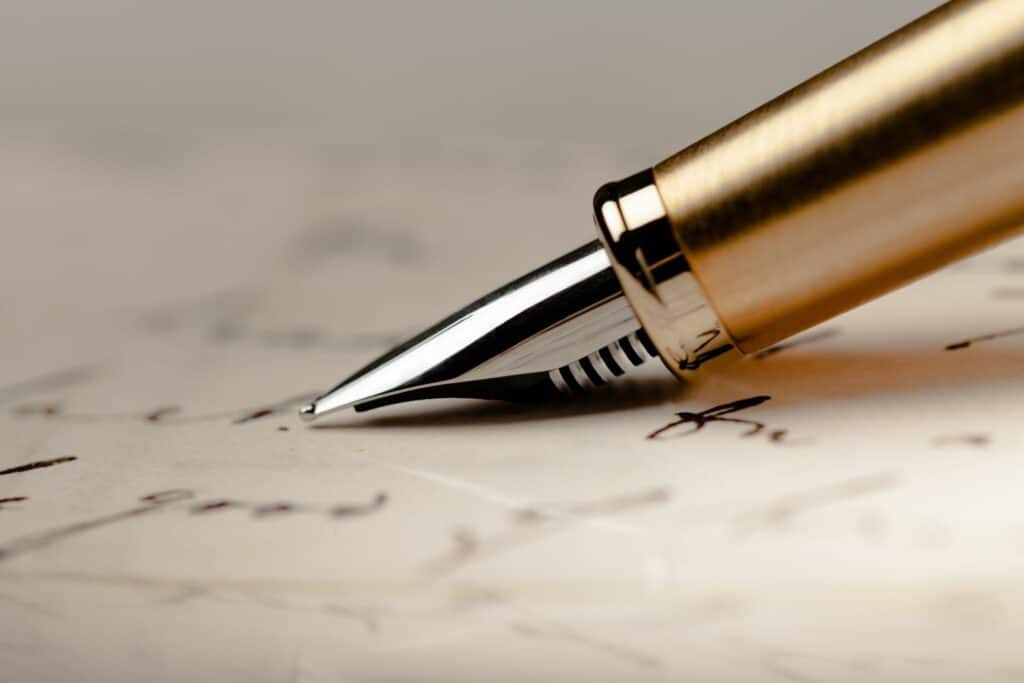
Nibs also come in several different materials. There are stainless steel nibs, gold nibs, and titanium nibs, each offering different writing characteristics. A gold nib will be flexible and can adjust to various writing pressures. A stainless steel nib will be durable and affordable, plenty reliable, but less flexible and forgiving than gold. A titanium nib will be flexible and durable, offering a blend of both. Other nibs may be alloys designed to provide certain writing characteristics.
It’s also worth noting that there are different styles of nibs, as well. There are round nibs as well as cursive, architect, sharpened, stub, and daily italic nib options. A round nib will provide the easiest writing performance to start with, but an italic nib is a nice way to change up writing style.
Ink Filling Mechanism
There are two ways to fill a fountain pen. The first is to simply replace the cartridge. To do so, just unscrew the grip from the barrel and remove the old cartridge, replacing it with a new one. Press this cartridge firmly into the grip to puncture the cartridge and allow ink to flow.
The other way is to refill the converter with bottled ink. These pens have their own filling mechanisms that are simple to use. Just unscrew the grip from the barrel and remove the converter. Push the plunge on the end of the converter down. Place the nib into a bottle of ink and pull the plunger up so it draws ink in. Wipe the nib material with a tissue to clean it.
Cartridges are obviously easier, but converters are cheaper in the long run.
Ergonomics and Weight
The comfort of your writing experience depends on the pen’s grip and weight. A heavy pen will feel substantial in hand but can tire out the user after a while. Light fountain pens won’t tire the user as easily, but they may be harder to write with smoothly, as they’ll react more to bumps and imperfections in the paper.
Also, grip choice does matter. It’s worth comparing several pens to figure out which is the most comfortable and a good fountain pen for your hand type.
Budget and Brand
As a collector’s item, fountain pens come in a wide range of prices and from many different pen manufacturers. Expensive brands may include Lamy, Aurora, David Oscarson, and Montblanc. However, less expensive options are available from Parker, Pilot, and Kaweco (my personal favorite).
And for those who aren’t interested in new fountain pens, there is a whole culture of fountain pen aficionados with vintage pens for sale.
Mastering the Art of Writing
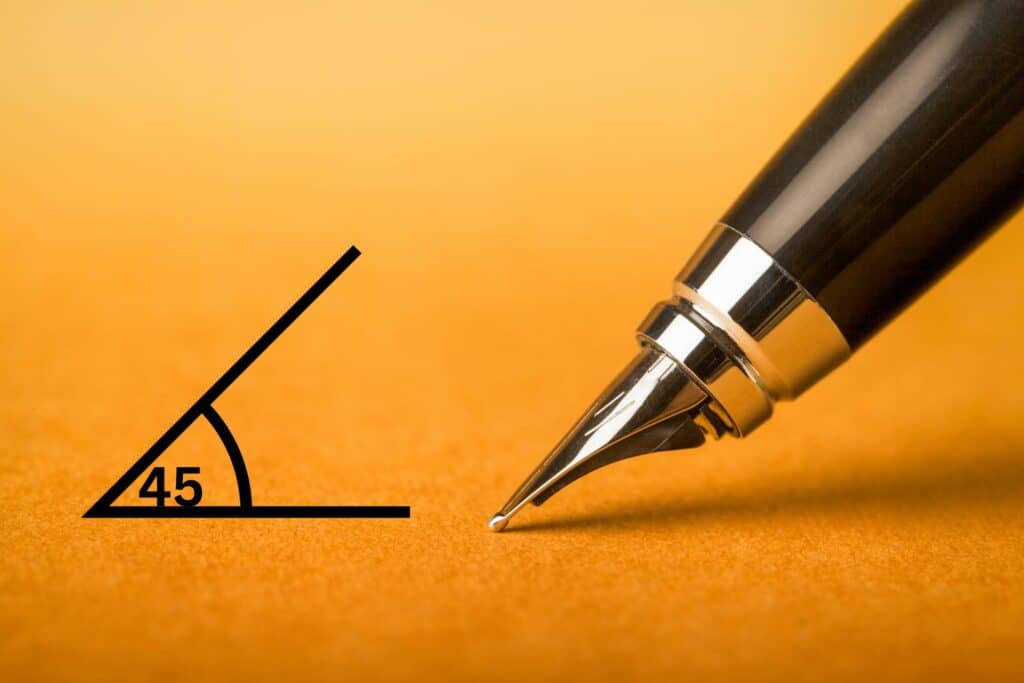
Chances are you won’t be able to just grab a fountain pen and start scratching out beautiful calligraphy right away. It’s an art that takes some getting used to, but the juice is certainly worth the squeeze. The following are some tips to keep in mind when you write with a fountain pen for the first time. If you’re interested in getting started, journaling is the perfect way to hone your fountain pen writing skills.
1. Get a Grip
Hold the pen with a light grip. The index finger should rest on the grip while the middle finger and thumb hold the pen in place. Each pen and nib may have a correct angle at which to hold the pen, so get used to your individual pen. However, the main plan for getting the correct angle and grip is to hold the pen so that the nib’s design is facing upward while the pen is on the paper.
2. Maintain Consistent Pressure
Writing fountain pens requires consistent pressure. Avoid applying too much pressure, as it can lead to ink flow issues, ink pools, and damage the nib (especially gold nibs and fine nibs). Let the pen’s weight and the ink’s capillary action do the work. You just guide it.
3. Adjusting Your Writing Angle
Experiment with the pen’s angle to the paper to find the sweet spot where the ink flows smoothly. Most fountain pens write well at a 45-degree angle (this is generally the correct angle), but this can vary depending on the nib and writing style.
Note: While the nib itself won’t change, it does need to face upward, slightly twisting the pen while writing will adjust the line thickness slightly. A little twist will usually result in thin lines.
4. Move Slowly and Steadily
While fountain pens did once revolutionize how fast one could write, modern fountain pens work best when the user writes at a moderate pace. Writing too quickly may disrupt the ink flow, resulting in skips and uneven lines. Take your time, enjoy the process, and use smooth writing movements when working with a new pen.
5. Paper Choice
High-quality paper enhances the fountain pen writing experience. It also helps prevent feathering and bleeding—two ugly side effects of fountain pens. Look for fountain pen-friendly paper that is smooth and thick enough to handle the ink without soaking through the writing surface.
How To Maintain a Fountain Pen
Proper maintenance ensures your fountain pen will work for years of smooth writing. Heck, you may even be able to hand it down to your son one day. Just be sure to show home how to write with a fountain pen first, or else he might sell it before he grows to love it. Here’s how to care for your cherished writing instrument:
Cleaning a Fountain Pen
Regularly cleaning your fountain pen can prevent ink clogs and keep the pen’s performance in tip-top shape. Flush the pen with water or pen flush solution, but make sure to follow the manufacturer’s guidelines before flushing—you don’t want to ruin a good pen.
Storing Your Fountain Pen
When you’re not using your fountain pen, store it horizontally or with the nib facing upward. Remember, these writing instruments hold ink in them, so avoid storing it with the nib downward, as gravity may cause ink pools in the cap, leading to leaks and stains.
Fountain Pen Inks Selection
Use high-quality fountain pen ink. You want to make sure that it’s compatible with your pen’s filling system. Experiment with different ink colors and brands to find your favorites.
Nib Maintenance
If a nib becomes scratchy or inconsistent, it might need some adjustment. Consult with a professional nibmeister to tune and smoothen the nib to your liking. Yes, a nibmeister is a real thing.

Embrace the Experience of Writing with a Fountain Pen
We’ll get a little sappy here: Writing with a fountain pen is more than just putting words on paper; it’s an experience that connects you to tradition, history, and the pleasure of handwriting.
As you embrace the world of fountain pens, remember that it’s a journey of style, self-expression, and personal preference. Invest time in finding the perfect pen for you, master the art of writing with patience, and maintain your pen to make it last a lifetime. Let the elegance of fountain pen writing inspire your creativity and make each stroke a work of art.
Fountain Pen Writing FAQs
The following are some of the most commonly asked questions about fountain pens. Be sure to check for an answer to your question below. If you have more questions, feel free to reach out in the comments below and I’ll look for an answer.
What is the most expensive fountain pen brand?
While the most expensive fountain pen ever sold went at auction for $8 million, Montblanc is likely the most expensive fountain pen brand, with several models north of $1 million. That’s a far cry from the $4.99 ballpoint pens at the local drugstore.
Is there a trick to writing with a fountain pen?
The trick to learning how to write with a fountain pen is to hold it at the best angle with just the right amount of pressure. Most of the time, the best angle is around 45 degrees, and light pressure from the index finger will usually start the ink flowing properly.
How do you use a fountain pen for beginners?
My suggestion for beginners is to use a cheaper pen and get the feeling for it. While any fountain pen will be more expensive than cheap ballpoint pens, making a mistake when getting the feel for a flexible nib on a new pen won’t break your heart if you only paid $8 for a pen as much as it might if you apply too much pressure on a $200 model. And remember, while these are collector’s items, you can get a good fountain pen without breaking the bank, but like a good watch, you will get what you pay for.
What angle should you write with a fountain pen?
The best angle for writing with a fountain pen is usually around 45 degrees, regardless of whether you’re using medium nibs for casual writing or finer nibs for fine details.

